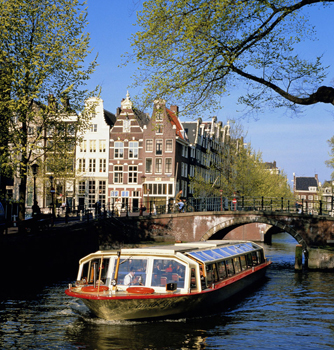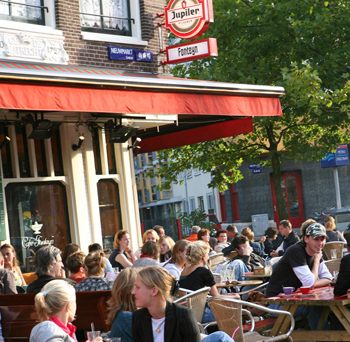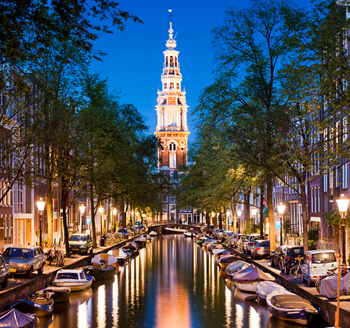Introduction to Amsterdam
There’s nowhere quite like Amsterdam. You could be sitting nursing a drink outside one of its cafés, chugging by boat along its canals, or riding its ringing trams, and you’ll know immediately that you couldn’t be anywhere else in the world. What is it that makes it so unique? Well, its watery cityscape means that much of the centre is off-limits to traffic; its architecture is for the most part on a human rather than a grandiose scale; and its people are comfortable in their skin, proud of the capacity of their city to change, but also of its uncanny – and reassuring – ability to stay much the same as it has always been.

In part it’s the longstanding liberal tradition of the city that has given Amsterdam its distinctive character, beginning with the obvious – the legalized prostitution and dope-smoking coffeeshops – through to more subtle qualities, encapsulated by Amsterdammers themselves in the word gezellig, a very Dutch concept which roughly corresponds to “warmly convivial” – something perhaps most manifest in the city’s wonderfully diverse selection of bars and cafés. The city is also riding something of a resurgent wave, with dozens of great new restaurants, a vibrant arts scene and a club scene that has come of age, not to mention the radical redevelopment of its old docklands and the rediscovery of neighbourhoods like the Oud West, de Pijp and Amsterdam Noord – a process that will only be hastened when they finally complete the Noord-Zuid metro line, whose workings have scarred the city centre for years now.
The old centre of the city spreads south from the train station, and includes Amsterdam’s famous Red Light District. The layout of the rest of the city centre is determined by a web of canals radiating out from here to loop right round the centre as the so-called Grachtengordel, a planned, seventeenth-century extension to the medieval town, with its tall gabled houses reflected in black-green waters.
There are plenty of first-rate attractions, most notably the Anne Frank Huis, the Rijksmuseum, with its wonderful collection of Dutch paintings, and the peerless Van Gogh Museum, the world’s largest collection of the artist’s work. But it’s not all about the sights: Amsterdam is a great city just to be in, with no attractions so compelling that they have to interrupt lazy days of just wandering the canals and taking in the city at your own pace. Finally, don’t forget that Holland is a small country and that there are plenty of compelling attractions close by, not least the small town of Haarlem, with the great Frans Hals Museum, the Zuider Zee villages to the north, and the stunning Keukenhof Gardens – all very easy to reach by public transport.
Best places for…a cold beer in summer
It’s hard to imagine a more chilled-out place than Amsterdam in summer, and a better place to just kick back and drink beer. Here are some of our favourite spots to enjoy an alfresco vaasje (glass of beer): See also Het Molenpad, Proust and ‘t Smalle

When to visit
Amsterdam has warm, mild summers and moderately cold and wet winters. The climate is certainly not severe enough to make much difference to the city’s routines, which makes Amsterdam an ideal all-year destination. That said, high summer – roughly late June to August – sees the city’s parks packed to the gunnels and parts of the centre almost overwhelmed by tourists. Spring and autumn are not too crowded and can be especially beautiful, with mist hanging over the canals and low sunlight beaming through the cloud cover. Even in January and February, when things can be at their gloomiest, there are compensations – wet cobbles glistening under the street lights and the canals rippled by falling raindrops. In the summer, from around June to August, mosquitoes can be bothersome.
